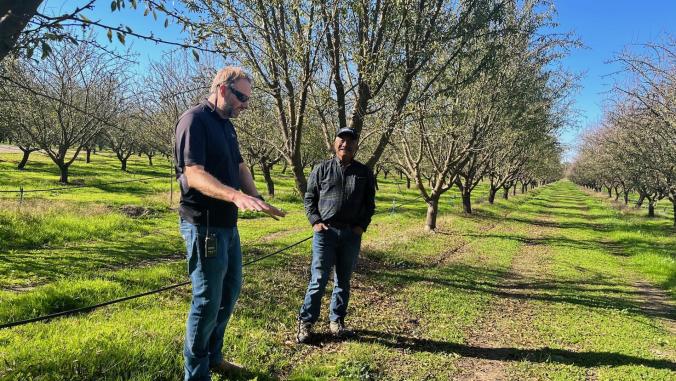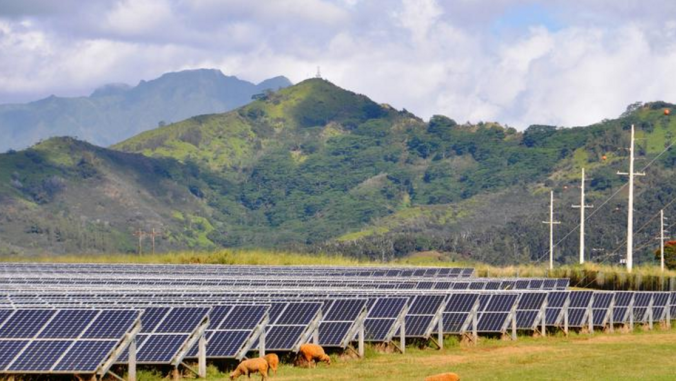Building a Microgrid in a day to power VERGE
Engineers from SunPower, PrimoWind, All Power Labs, PG&E and Spirae built a renewably-powered microgrid to supply all the electricity the VERGE 2015 conference will need.

Sunshine, walnut shells, wind, batteries — wrap them all up with some wires, aluminum polls, electricity inverters, a bit of load control software and you’ve got a microgrid.
Well, maybe it’s a little more sophisticated than that. But a standalone, renewable power microgrid capable of supplying 15 kilowatts of power continuously was built in a day — Monday — in San Jose.
As VERGE 2015 got under way downtown at the Fairmont hotel, engineers from four renewable energy companies were constructing the microgrid to provide the electricity for the rest of the conference — Tuesday through Thursday.
Solar panels from SunPower, a biomass gasifier that converts biowaste to fuel from All Power Labs, a wind turbine from Primo Wind, a biodiesel generator from Genset and a battery to store all that power carried on a hybrid electric utility truck from Pacific Gas & Electric Co. were wired together with inverters and control panel from Spirae to form the VERGE microgrid.
The microgrid, which measured maybe 20-feet-by-20 feet, will provide electricity for two vast ballrooms, several smaller meeting rooms – and all the power that lights and computers used by some 1,500 attendees will need — inside the Fairmont Hotel in San Jose.
And then some. The microgrid will also power four electric vehicle charging stations outside the Fairmont.
This is the third time the VERGE conference has been powered by a standalone, made-in-a-day microgrid.
“We build a more innovative microgrid every year to demonstrate that the technology is here today to create the energy systems of the future,” said Eric Faurot, CEO of GreenBiz.
He said that furthermore the microgrid shows the interoperability possible “between key emerging players from biomass, solar, wind, battery storage and the controllers that make them work together.”
The VERGE conference is about what’s possible when technology and sustainability intersect.
Actually, each of the power sources that are part of this microgrid could alone power a small microgrid — and some have.
Indeed, that is why Primo Wind and All Power Labs exist — to produce electricity for small systems without relying on utility grids or fossil fuels.
All Power Labs says it dreams of changing how people deal with waste: “Our motivating goal is to deploy at scale a new type of energy product — a personal scale waste to energy appliance.” It would be like a personal computer, it says.
PrimoWind makes small scale wind turbines that can power, one home, say, or a small village.
SunPower makes solar panels and equipment for customers ranging from the largest corporate campus and government agencies to small homes. It has created tiny handheld solar lanterns used by individual students in the Philippines who have no electricity in their homes. A microgrid producing 15 kilowatts of power can be built with a panel or two.
And Pacific Gas & Electric Co., a utility, has been transitioning its energy mix towards more renewable sources and figuring out how to combine its grid operations with distributed generation.
The electric hybrid bucket truck toting a large battery for energy storage is new for PG&E — and unique in the utility industry, according to Christopher Benjamin, senior manager of corporate sustainability. The EV bucket truck can be used to power a microgrid itself and PG&E envisions deploying them to support back up generation in the event of big storms taking out power in a neighborhood.
“We see these trucks as a real game changer for the industry. This particular truck has the potential to power about 100 homes during an outage,” he said.
"These trucks have the ability to power 100 homes in a neighborhood in the event of an emergency such as an earthquake."
“Here at VERGE, the PG&E truck is acting as a source of energy to feed into the microgrid just like the wind and solar and other things,” Benjamin said. “We are literally plugging the PG&E truck into the microgrid so the battery is going to supply power to the microgrid.”






